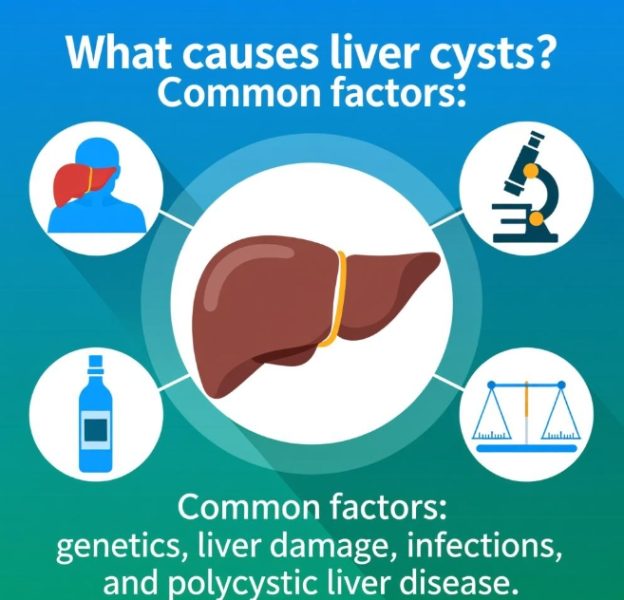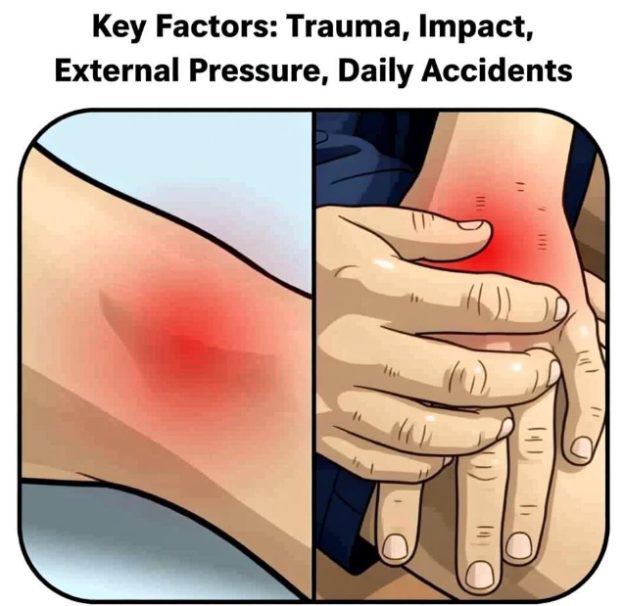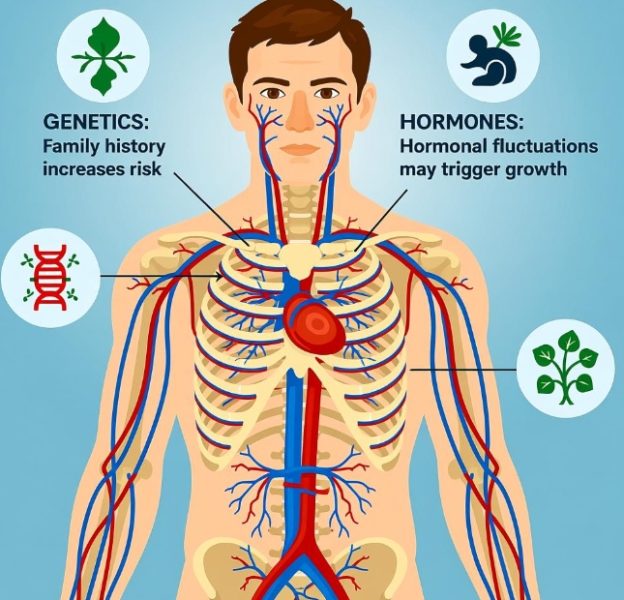Liver cysts are fluid-filled sacs that usually remain asymptomatic and are found incidentally on imaging. When symptoms do occur, they are related to cyst size, number, or complications such as infection, rupture, or pressure on adjacent organs.
- Right-upper-quadrant discomfort
A persistent dull ache or feeling of fullness under the ribs is the most common complaint, especially after meals or prolonged sitting. - Abdominal bloating and early satiety
Large cysts compress the stomach or intestines, producing visible distension and the sensation of being full after only a small amount of food. - Nausea and occasional vomiting
Pressure on the gastric wall can trigger queasiness, eructation, or post-prandial vomiting. - Palpable mass
Very large or superficial cysts may be felt as a smooth, non-tender swelling that moves with respiration. - Acute pain
Sudden, sharp pain indicates possible rupture, intracystic bleeding, or torsion; this is often accompanied by shoulder-tip pain if intraperitoneal bleeding occurs. - Jaundice
Obstruction of intra-hepatic bile ducts by centrally located cysts leads to scleral icterus, dark urine and pale stools. - Fever and systemic signs
Infected cysts produce high fever, chills, leukocytosis and localized tenderness resembling a liver abscess.
Most simple cysts never require treatment; however, any new or worsening symptom, especially acute pain or fever, warrants urgent imaging to exclude complications.
| Symptom | Typical Presentation |
|---|---|
| RUQ discomfort | Dull ache, fullness, post-prandial |
| Bloating & early satiety | Large cyst compresses stomach |
| Nausea/vomiting | Pressure-related, post-meal |
| Palpable mass | Smooth, non-tender, moves with breathing |
| Acute sharp pain | Rupture, bleeding, torsion |
| Jaundice | Obstructive, dark urine, pale stools |
| Fever & chills | Infected cyst, leukocytosis |



